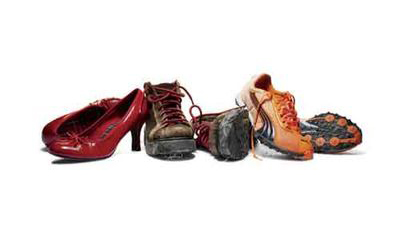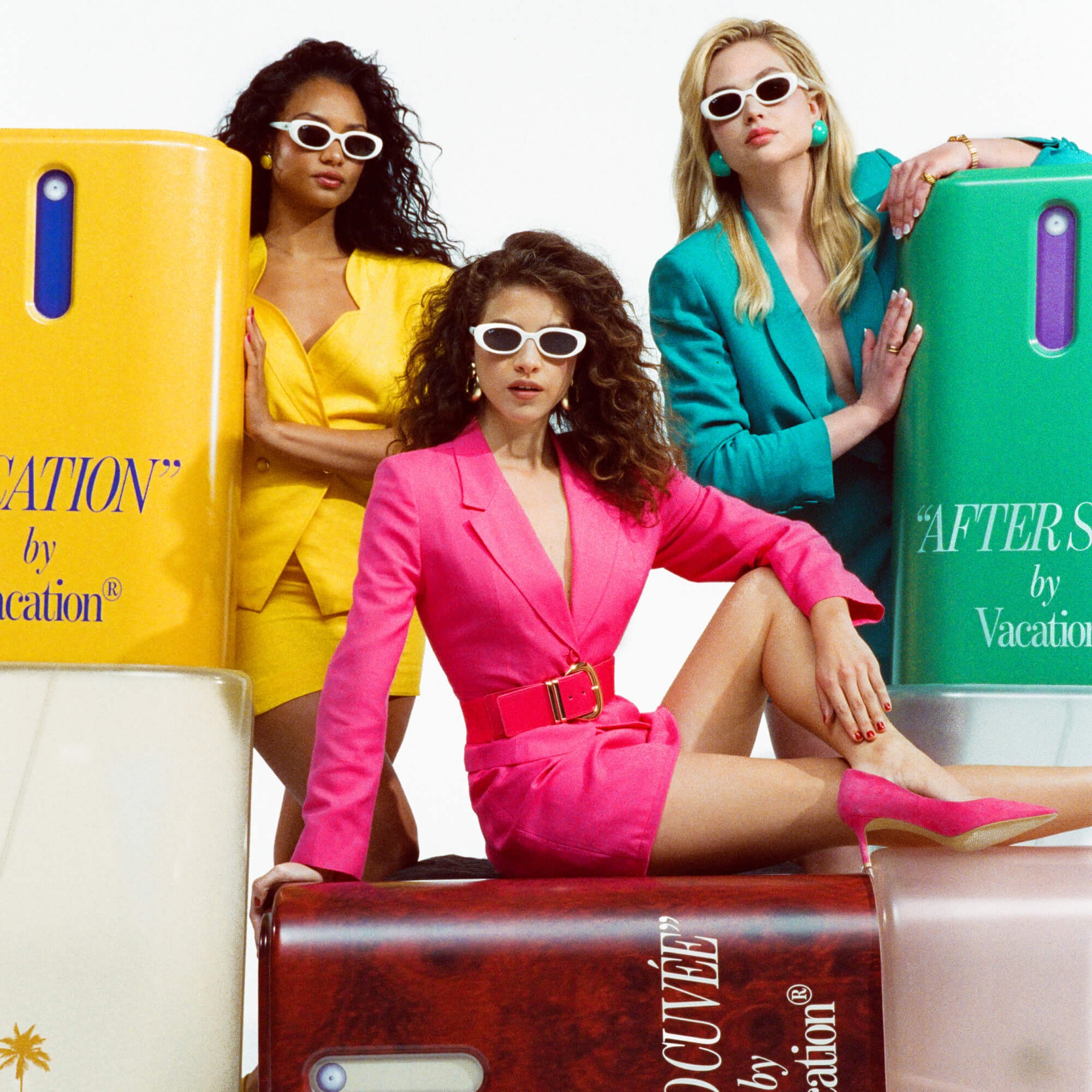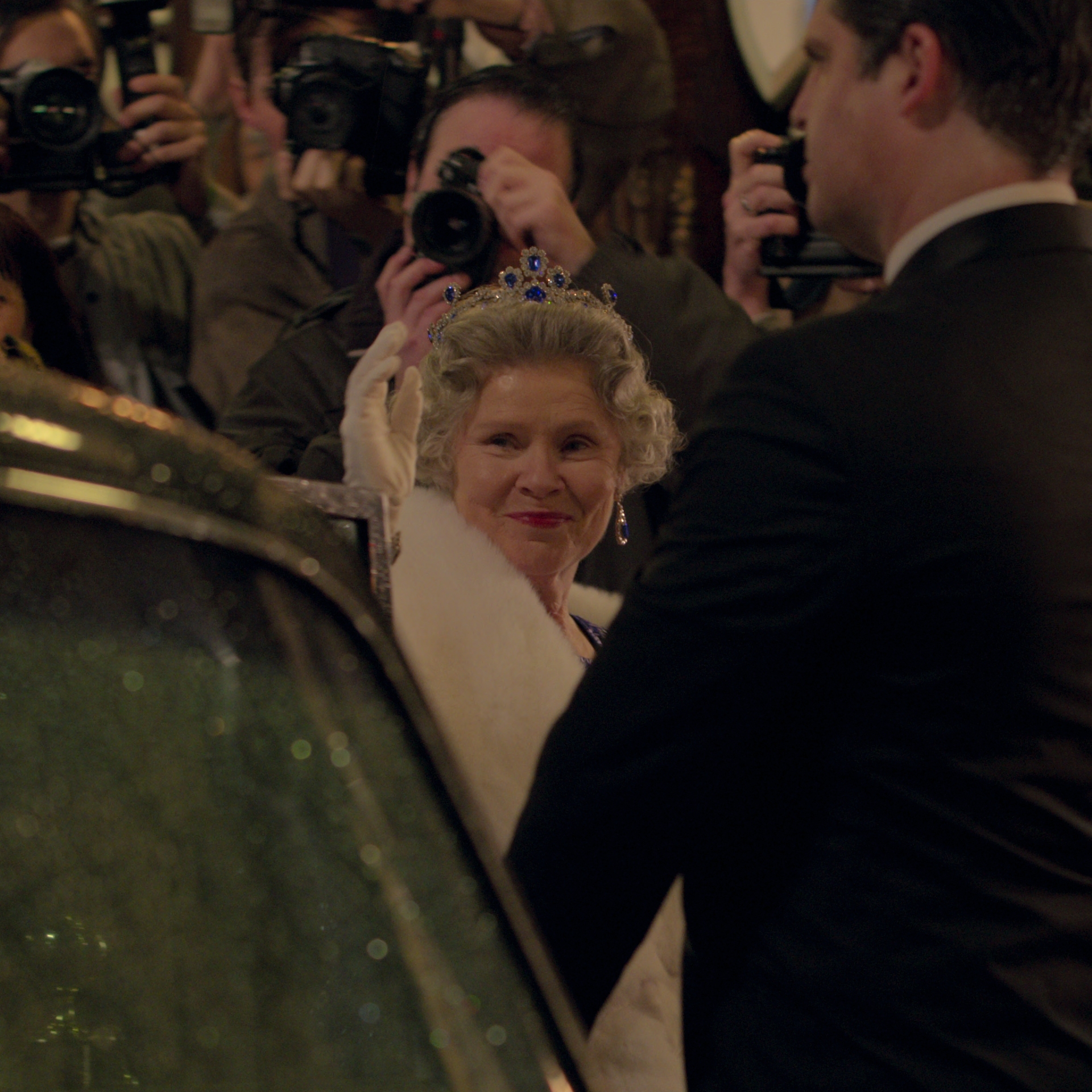Whose Carbon Footprint Is the Smallest?
How do you stack up?

Guess who is earth-friendly and whose carbon footprint is to blame for drowning polar bears and worse: Is it the mountain maven, the globe-trotter, or the urban hipster? It's not who you think. How do you stack up?
1. THE URBAN HIPSTER
"I eat out way too much. I drink bottled water. I do the club scene a lot. Am I busted?" —Nikea, 29, public defender
2. THE MOUNTAIN MAVEN
"Even my cappuccino maker and hair dryer are solar-powered." —Melissa, 33, land-conservation program manager
3. THE GLOBE-TROTTER
"I've never learned how to drive. I always use public transportation." —Josie, 26, marketing manager
1. THE URBAN HIPSTER
Nikea is too exhausted after a day at work in Denver to think about cooking, much less the environment. She's a classic work-hard/play-hard person, and she chills by going out with friends to bars and dance clubs.
Stay In The Know
Get exclusive access to fashion and beauty trends, hot-off-the-press celebrity news, and more.
LIVES: In an 835-square-foot duplex with a friend. The late-1800s building does not have air-conditioning, energy-efficient windows, or energy-saving insulation. Nikea's roommate insists that the thermostat hover at 58 degrees, even in the winter, to keep utility costs down, but they haven't switched to the other classic saver, compact fluorescent bulbs.
DRIVES: A 1994 Nissan Sentra (30 mpg) about twice a month to Target to stock up on big-ticket items. Otherwise, she takes the bus two miles to work to avoid expensive downtown parking. From work, she walks a few blocks to shop for groceries and other necessities.
EATS: A Healthy Choice lunch most days, brought from her home freezer. She eats out about twice a week, orders takeout another two days a week, and cooks quick-fix chicken or veggies the other days. Drinks a lot of bottled water, both at home and at work.
WEARS: Suits from Macy's, fun clothes from there or Old Navy. She buys what she likes and what she can afford ("I'm not a shopaholic"). She doesn't pay attention to whether a sweater is made in Illinois or India.
DOES: Sushi and dirty martinis as after-hours indulgences, as well as dance clubs. "That's what you do in your 20s, isn't it?"
2. THE MOUNTAIN MAVEN
Melissa, a back-to-the-land true believer, chucked her career as a lawyer in New York City, then volunteered for The Nature Conservancy in Colorado (which eventually hired her).
LIVES: In a 2000-square-foot cabin at 9200 feet, so far from the nearest town that she's forced to live off the grid, meaning everything from her hair dryer to the cappuccino maker is powered by solar panels. If it has been cloudy, she revs up a generator (three days a year at most) to charge the solar batteries.
SHE ALSO HAS: A wood stove for heat (powered by trees she and her husband cut from their property) and propane for the cook stove, radiant floor heat, and hot water.
DRIVES: A Subaru WRX (25 mpg) 18 miles each way to her job and the grocery store in Boulder. She drives around the state on business, sometimes in a Prius that her employer loans out.
EATS: Organic fruits and vegetables, some from as far away as New Zealand, although she's trying to buy more locally. She doesn't eat out or buy packaged foods much and tries to stay away from beef, since cows and other livestock contribute serious greenhouse gases to the environment.
WEARS: Quality pants and jackets to work, sometimes from the local consignment shop, sometimes brand-new. For play, it's Patagonia fleece. "I saw a website that talked about sustainable clothing, but I just don't like that hippie shit."
DOES: Nordic skiing, hiking, cycling outside her back door. She also competes in ski races (including one in Anchorage, AK).
3. THE GLOBE-TROTTER
Josie is part homebody, part globe-trotter, and considers herself more eco-conscious than most people. When not traveling for fun or her job with a Hong Kong-based company that makes eco-friendly textiles, she's more likely to be with her boyfriend at a ukelele concert than at a dance club.
LIVES: In a three-bedroom townhouse in Queens, NY, attached to other houses on the block, with her parents. They keep the thermostat fixed between 68 and 70 degrees and turn it off when they leave the house. She doesn't use air-conditioning. She does indulge in long, hot baths and showers — sometimes twice a day to stay warm in the winter.
DRIVES: Doesn't know how, so she walks 15 minutes to the subway, which she rides for 35 minutes to work. Occasionally, she hails a cab if she's running late for a meeting.
EATS: Takeout and restaurant food roughly four times a week. "I cringe at all the plastic and Styrofoam containers," she says. She eats meat, though not every day. Eating virtue: No bottled water ("I drink water warm").
WEARS: "I'd rather save up and buy a better-quality piece than buy a bunch of cheaper things that don't last."
DOES: Enviro-studies. She recently earned a certificate in conservation biology from Columbia University. During a field trip to Brazil, she caught travel fever and last year alone went to China, Hong Kong, Germany, Washington, Utah, Brazil, Ecuador, and Costa Rica. "I feel bad about those trips," she says, knowing they make her a carbon offender. But she tries to make up for it by being conscientious about reducing, reusing, and recycling.
See if you guessed right (for the record, driving, flying, heating your place, and using electricity are the heaviest-weight carbon offenders. What you eat and buy generally makes a more subtle, but still important, difference).
The Judge
We called in Robert Henson, author of The Rough Guide to Climate Change and a writer at the National Center for Atmospheric Research, to weigh these women's eco-virtues against their eco-vices.
JOSIE: the biggest footprint
WHY: Big-city dwelling is often more eco-friendly than living elsewhere. "Josie gets major credit for taking public transportation and sharing a townhouse — the common walls keep energy costs lower than they might otherwise be," says Henson. Josie's fashion approach (buying fewer but higher-quality clothes) is also eco-smart.
But Josie's wanderlust caused her footprint to balloon well above average: One flight from New York to Shanghai and back produces more greenhouse gas per person than a year's worth of typical driving. If she worked some of her pleasure trips in with her business flights, she could make a huge difference, says Henson. The next best thing is to purchase carbon offsets (you pay a company to do something green-virtuous) to assuage guilt and lighten your eco-load.
MELISSA: midsize footprint
WHY: She'd be the winner if not for the fact that she burns so many tons of fossil fuels commuting from her rustic home to the city. "If she got a small hybrid for everyday commuting, she could cut the biggest part of her carbon footprint by a third or more," says Henson. Melissa gets climate points for avoiding beef — the average American eats more than 60 pounds of it a year, and those cows generate a lot of greenhouse gas, both directly and indirectly. On the downside, as Melissa herself points out, she indulges in organic veggies grown halfway around the world — and shipped as far to her table. "A few more trips to the farmer's market would help freshen her diet and further reduce her carbon footprint," Henson says.
The eco-winner: NIKEA: the smallest footprint
WHY: You don't have to nix dirty martinis or nights out on the town just to live lightly on the planet. Taking the bus to work, walking to get groceries, and sharing a modest duplex with a friend score her beaucoup eco-points. One simple step — putting in compact fluorescent lights — would seriously lower emissions and shave her utility bill. And if she signed up for her power company's wind-power option, she could make her electricity emissions-free. One of Nikea's small indulgences — bottled water — may be her biggest climatic transgression, Henson says, considering the fuels that go into the plastic and the energy used in shipping. Tap filters or in-refrigerator jugs would give Nikea fresh water without the extra emissions.
How do you stack up?
Check out the Daily Green's Carbon Footprint Calculator.
MORE CARBON FOOTPRINT ARTICLES
The Top 3 Carbon Evils
What Is a Carbon Footprint?
-
 The Scent of the Summer Is a Little Bit Pool Water, Plus a Lot of Swimsuit Lycra
The Scent of the Summer Is a Little Bit Pool Water, Plus a Lot of Swimsuit LycraVacation’s new body mists are coming in hot.
By Samantha Holender
-
 In 'Sinners,' Music From the Past Liberates Us From the Present
In 'Sinners,' Music From the Past Liberates Us From the PresentIn its musical moments, Ryan Coogler's vampire blockbuster makes a powerful statement about Black culture, ancestry, and art.
By Quinci LeGardye
-
 Kendall Jenner Has the Last Word on the Best Travel Shoes
Kendall Jenner Has the Last Word on the Best Travel ShoesLeave your ballet flats in your checked bag.
By Halie LeSavage
-
 The 100 Best Movies of All Time: The Ultimate Must-Watch Films
The 100 Best Movies of All Time: The Ultimate Must-Watch FilmsWe consider these essential viewing.
By Quinci LeGardye
-
 The Best Bollywood Movies of 2023 (So Far)
The Best Bollywood Movies of 2023 (So Far)Including one that just might fill the Riverdale-shaped hole in your heart.
By Andrea Park
-
 ‘Bachelor in Paradise’ 2023: Everything We Know
‘Bachelor in Paradise’ 2023: Everything We KnowCue up Mike Reno and Ann Wilson’s \201cAlmost Paradise."
By Andrea Park
-
 Who Is Gerry Turner, the ‘Golden Bachelor’?
Who Is Gerry Turner, the ‘Golden Bachelor’?The Indiana native is the first senior citizen to join Bachelor Nation.
By Andrea Park
-
 The 50 Best Movie Musicals of All Time
The 50 Best Movie Musicals of All TimeAll the dance numbers! All the show tunes!
By Amanda Mitchell
-
 'Ginny & Georgia' Season 2: Everything We Know
'Ginny & Georgia' Season 2: Everything We KnowNetflix owes us answers after that ending.
By Zoe Guy
-
 The Cast of 'The Crown' Season 5: Your Guide
The Cast of 'The Crown' Season 5: Your GuideFeatures The Mountbatten-Windsors have been recast—again.
By Andrea Park
-
 Who Is Hasnat Khan, Princess Diana’s Boyfriend on Season 5 of ‘The Crown’?
Who Is Hasnat Khan, Princess Diana’s Boyfriend on Season 5 of ‘The Crown’?Features Di’s friends have said she referred to the doctor as \201cthe love of her life.\201d
By Andrea Park